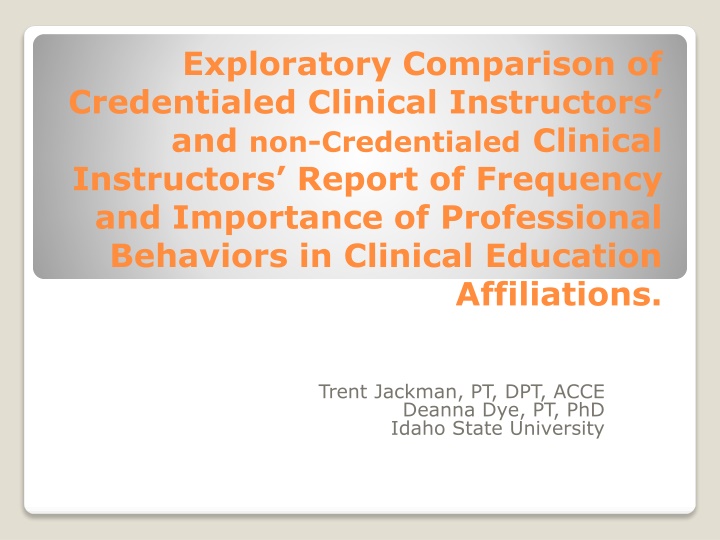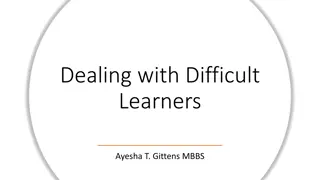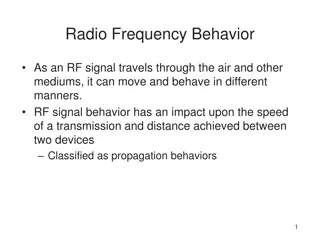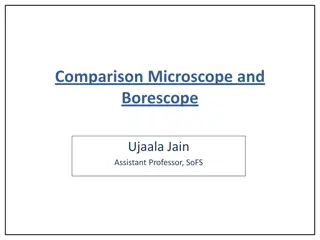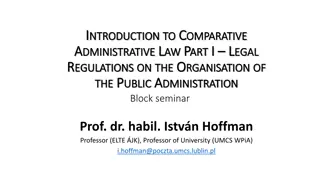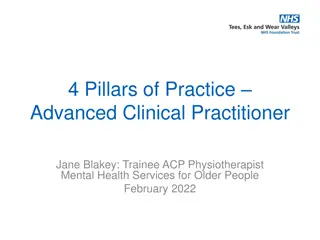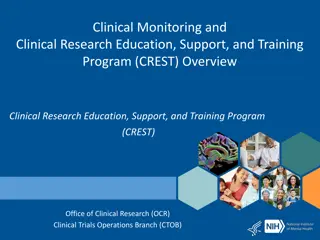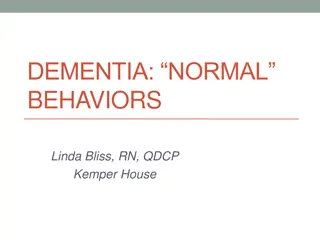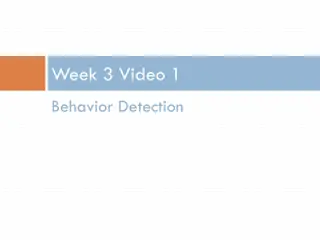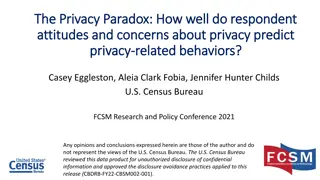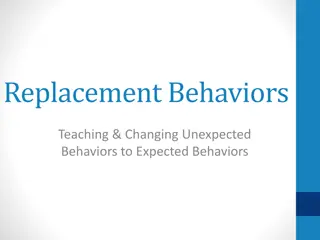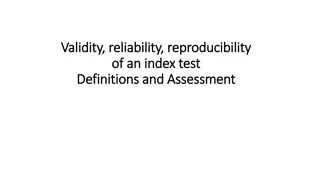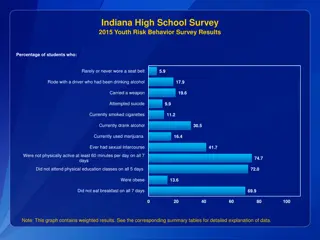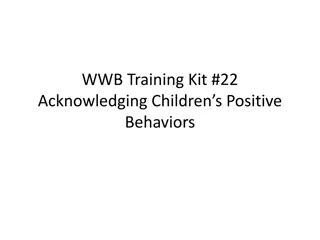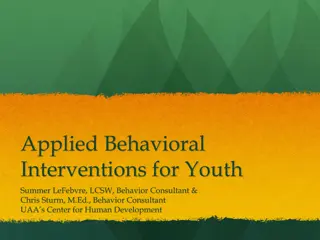Comparison of Professional Behaviors in Clinical Education
Professional behavior characteristics play a crucial role in enhancing student learning during clinical education. This study examines the differences in reported importance and frequency of professional behaviors between credentialed and non-credentialed clinical instructors. The background outlines the historical context and importance of professional behavior in rehabilitation education, with a focus on the ongoing development and credentialing programs for clinical educators within the healthcare sector. The methods employed include survey development and distribution to students, clinical instructors, and center coordinators of clinical education to gather insights on various professional behaviors.
Download Presentation

Please find below an Image/Link to download the presentation.
The content on the website is provided AS IS for your information and personal use only. It may not be sold, licensed, or shared on other websites without obtaining consent from the author.If you encounter any issues during the download, it is possible that the publisher has removed the file from their server.
You are allowed to download the files provided on this website for personal or commercial use, subject to the condition that they are used lawfully. All files are the property of their respective owners.
The content on the website is provided AS IS for your information and personal use only. It may not be sold, licensed, or shared on other websites without obtaining consent from the author.
E N D
Presentation Transcript
Exploratory Comparison of Credentialed Clinical Instructors and non-Credentialed Clinical Instructors Report of Frequency and Importance of Professional Behaviors in Clinical Education Affiliations. Trent Jackman, PT, DPT, ACCE Deanna Dye, PT, PhD Idaho State University
Disclosure No conflict of interest
Overview Purpose Background Methods Results Discussion Conclusion
Purpose Professional behavior characteristics are important to maximize student learning during clinical education affiliations. The purpose of this study was to explore the comparison of credentialed and non- credentialed clinical instructors report of importance and frequency of professional behaviors during clinical education affiliations.
Background History of professional behavior in rehabilitation Clinical experience is most important component of education. (Gaberson) Emery studied importance and frequency of clinical teaching behaviors Nursing Clinical Teacher Effectiveness Inventory (Morgan and Knox) Ongoing development of professional behavior in teaching in clinical settings.
Background continued Credentialed Clinical Instructor Program American Physical Therapy Association Credentialing program for health care providers to improve teaching skills Plans and preparation to teach students Develop skills of performance evaluation Addresses legal implications for clinical educators
Subjects Students Clinical Instructors Center Coordinators of Clinical Education
Methods Used Emery s statements. Developed survey on Survey Monkey. 43 statements about professional behaviors Electronically sent to 142 CIs/CCCEs and to 118 students All levels of students and instructors
Methods CI asked to self-report importance and frequency of each behavior Student asked to report the importance of each statement and how frequently the CI demonstrated the behavior 5 point Likkert scale
Likkert Scale Frequency Always Usually Sometimes Rarely Never
Likkert Scale Importance Extremely Important Very Important Important Somewhat Important Not Important
Statements 4 categories Communication behaviors I am an active listener. Interpersonal Relations behaviors I am empathetic. Professional Skills behaviors I serve as an appropriate role model. Teaching behaviors I plan effective learning experiences.
Methods Statistics Descriptive Means Frequencies Percentages
Results 60 CIs (42%) and 76 students (64%) CIs most important characteristics: Point out student performance discrepancies Plans effective learning experiences Perceives self as an extension of the academic program Defines specific objectives for the experience
Results Students most important characteristics: CI points out performance discrepancies CI is an extension of the academic program CI demonstrates professional behavior CI provides unique learning experiences CI schedules regular meetings
Results CIs highest frequency characteristics: Questioning in a way to facilitate student learning Providing a variety of patients Pointing out discrepancies in student performance Explaining the physiological basis of PT evaluation Making yourself understood
Results Students report of highest frequency CI behaviors: Pointing out discrepancies in student performance Questioning in a way that facilitates student learning Explaining the physiological basis of PT evaluation Providing unique learning experiences Observing performance in a discreet manner
Discussion Importance Both groups: Greatest importance to: Point out student performance discrepancies Extension of academic program
Discussion Frequency Both groups: Pointing out discrepancies Questioning that facilitates learning Explaining the physiological basis of PT evaluation.
Discussion Differences Differences: Planning effective versus unique learning experiences Providing a variety of patients Observing in a discreet manner CI manages time well
Discussion Some areas that are considered important and have been frequently demonstrated per CI/student reports. Some areas need change Planning effective versus unique learning experiences. Student wants CI to plan meetings CIs need to recognize importance of observing in a discreet manner CIs need to define specific objectives CIs need to recognize demonstration of professional behavior.
Limitations Due to the small sample size, and therefore low power, corrections for multiple comparisons were not applied. No comparison of student to corresponding CI.
Future Research Compare each student to respective CI using Mann Whitney U tests to evaluate specific details of comparison.
Conclusion Need to better understand perceptions of CIs and students about professional behaviors in clinical education settings in order to improve student preparation for professional practice.
Acknowledgments Deanna Dye Students Clinical Instructors Center Coordinators Teri Peterson Conference Organizers
Resources Gaberson KB, Oermann MH. Clinical teaching strategies in nursing. 2nd ed. 2007; New York: Spriner Publishing. American Physical Therapy Association. http://www.apta.org/CCIP/. Accessed July 7, 2016. Emery M, Wilkinson CP. Perceived importance and frequency of clinical teaching behaviors: surveys of students, clinical instructors, and center coordinators of clinical education. J Phys Ther Educ. 1987;1:29-32. Emery M. Effectiveness of the Clinical Instructor: Students Perspective. Phys Ther. 1984;64;7:1079-1083. Moran J, Knox JE. Characteristics of best and worst clinical teachers as perceived by university nursing faculty and students. J of Adv Nursing. 1987;12:331-337. 1. 2. 3. 4. 5.
